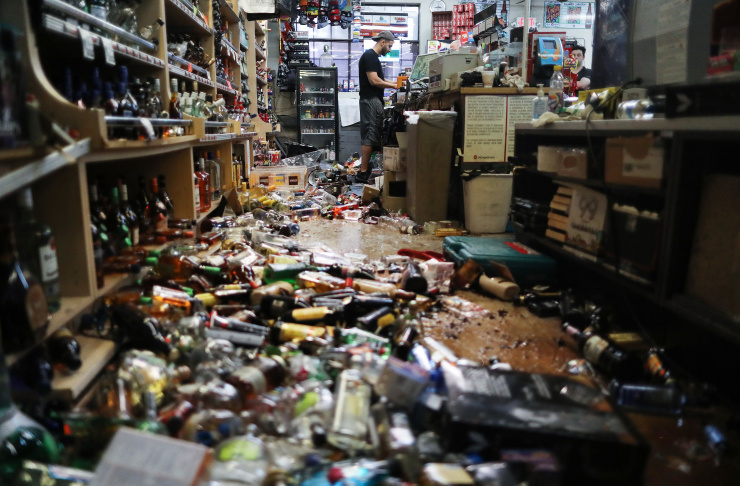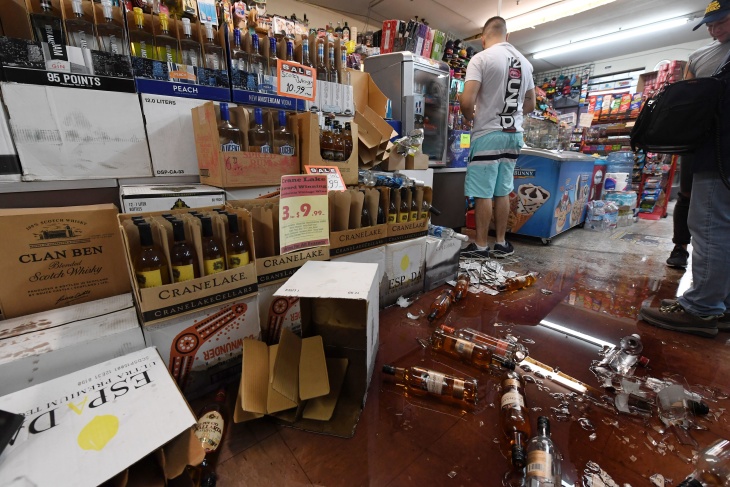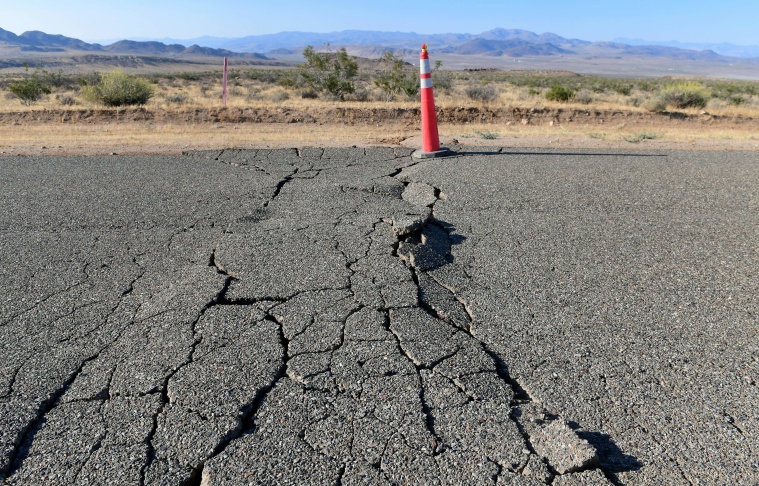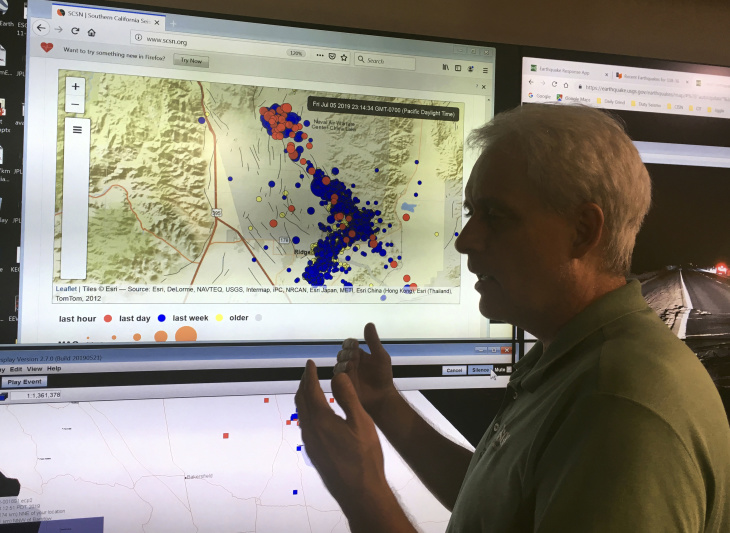
Hundreds of aftershocks generated by a 7.1 magnitude earthquake late Friday night made for a shaky night in Southern California's Mojave Desert.
The quake, the strongest in Southern California in 20 years, hit shortly after 8 p.m.
It was centered 11 miles from the town of Ridgecrest, which was already in recovery mode from a 6.4 magnitude quake the day before, on the morning of the 4th of July. Seismologists said that initial earthquake was a foreshock to the much strong temblor that hit Friday night.
That sequence of events, a big quake followed by an even stronger earthquake, is a known phenomenon.
"This is the same sequence," Dr. Lucy Jones tweeted Friday before speaking to the news media at CalTech. "You know we say 1 in 20 chance that an earthquake will be followed by something bigger? This is that 1 in 20 time."

WHO FELT IT
The shaking Friday night was felt over a massive area, from Las Vegas to L.A. down to Mexico and up to Sacramento. It was preceded by a few minutes with a 5.0 magnitude quake and followed by a few dozen aftershocks registering higher than a 4.0.
Seismologists cautioned that it is still possible that a quake larger than 7.1 could take place in the Little Lake fault zone that has been so active over the last few days.

Officials said early-warning systems worked for residents closer to the epicenter where the shaking was the strongest. But L.A. residents did not receive ShakeAlertLA warnings before either of the significant quakes.
When the magnitude 6.4 temblor didn't trigger any notifications from the app, many residents were left wondering why.
The answer? The threshold for an alert was higher than the projected shaking in Los Angeles. The app only warns users when the shaking that's likely to be felt within L.A. County is higher than a magnitude 5.0. After yesterday's earthquake, officials announced they would lower that threshold to 4.5, but the app won't be updated until the end of the month.
Jones, who has played a major role in urging the region to do more to prepare, said the current warning system is far from complete.
Get ready for the next major earthquake. Listen to our podcast: The Big One: Your Survival Guide
"There was a proposed budget that was very bare bones and we haven't even gotten that. The system is not up and functioning," Jones told our science reporter, Jacob Margolis, on Saturday morning. "The system doesn't work really well right not because we haven't paid anywhere near enough."

Fires, injuries and significant damage to roads and stores has been reported.
At magnitude 7.1, Friday night's temblor falls into the category of a major earthquake but it was not what everyone has come to know as a "Big One."
By comparison, the 1994 Northridge quake, which was a magnitude 6.7, struck in a densely populated area, killied more than 50 people, injured thousands of others and caused billions of dollars in damage.
This is a developing story. Check back for frequent updates throughout the day.
Sharon McNary, Jacob Margolis and Megan Garvey contributed to this report.
GET READY FOR THE BIG ONE
For Earthquakes, Forget The 'Go-Bag.' Here's How To Prepare
How To Not Get Life-Threatening Diarrhea After A Major Earthquake
The Big One Is Coming To Southern California. This Is Your Survival Guide
WHAT DO YOU WANT TO KNOW?
2019-07-06 14:15:00Z
Bagikan Berita Ini















0 Response to "The Aftermath Of A 7.1 Magnitude 'Main Shock' Shakes Southern California Desert All Night - LAist"
Post a Comment